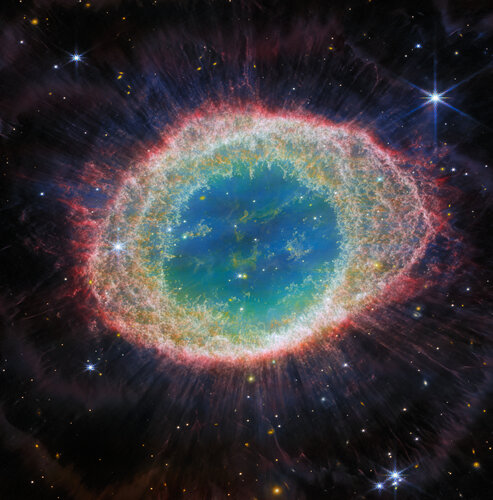

Open Image
The Ring Nebula is one of the most notable objects in our skies. It was discovered in 1779 by astronomers Antoine Darquier de Pellepoix and Charles Messier, and was added to the Messier Catalogue. Both astronomers stumbled upon the nebula when trying to follow the path of a comet through the constellation of Lyra, passing very close to the Ring Nebula.
These observations were completed as part of the James Webb Space Telescope observing programme GO 1558. To learn more about the team’s research of these new observations, see the latest NASA Webb blog here.
The NASA/ESA Hubble Space Telescope released the observation of the Ring Nebula in 2013 and since then this has become one of the observatory’s most well-known images. From Earth’s perspective, the nebula looks roughly elliptical. However, astronomers combined ground-based data with observations by Hubble to explore the object’s structure, evolution, physical conditions and motion. This research revealed that the nebula is shaped like a distorted doughnut.
More information
Webb is the largest, most powerful telescope ever launched into space. Under an international collaboration agreement, ESA provided the telescope’s launch service, using the Ariane 5 launch vehicle. Working with partners, ESA was responsible for the development and qualification of Ariane 5 adaptations for the Webb mission and for the procurement of the launch service by Arianespace. ESA also provided the workhorse spectrograph NIRSpec and 50% of the mid-infrared instrument MIRI, which was designed and built by a consortium of nationally funded European Institutes (The MIRI European Consortium) in partnership with JPL and the University of Arizona.
Webb is an international partnership between NASA, ESA and the Canadian Space Agency (CSA).
Contact:
ESA Media relations



